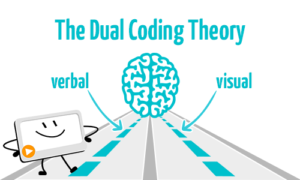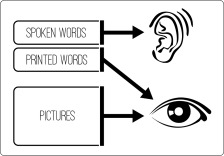- What is a digital identity?
Digital identity can be explained as the footprint of an individual or an organization over the internet. It can be related to their web activities including profile over social media, bloggers or over streaming services like YouTube (Stoller). Digital identity holds great potential especially for individual who create, design and share their creativity. One can also understand it as becoming a participant of the digital world in which everyone collaborates just like the real world in a way of sharing and creating information. In a way, one can approach by tracking the digital identity of an individual for providing work or hiring a professional on the basis of their online work.

Digital Identity Source: LinkedIn
- How do personal versus professional approaches to digital identity affect social media use?
Social media offers a variety of options to keep or create differences in personal and professional digital identity. However, one can easily mix both and affect their digital identity in the long and short term as well. In terms of personal approaches to the digital identity, one can share their trips, likes or dislikes on the basis of their personal interest (Oliveira and Lina). While in the professional capacity one restricts itself to more vocal about their personal interest and focus on the professional approaches while framing their digital identity. Hence, personal versus professional approaches to digital identity affect the way of interacting with social media.
- How do digital identities converge in networked public?
Digital identities certainly converge in networked public especially due to the search engine keywords. As an individual, when one create and share things on social media. It can easily be found on public domains. Although social media websites offer great help in restricting their user content for the public, still hiding everything on social media takes away the main objective of the platform. Therefore, digital identities mostly converge in networked public in a great way and changing the discourse of the general public by studying the digital identities of masses.
- What are the impacts and/or benefits? – Can a digital wallet provide trust in networked public?
In the modern digital payment system, the digital wallet is becoming important and providing a quick and easy way to the networked public for payment. There are many benefits of using the digital wallet such as quick and easy pay, low authorization, loading as per needs and also easily accessible through smartphone or wearables. However, there is a certain impact of the digital wallet as well which diminishing its benefits. Due to less security, it becomes an easy target for hackers to gain access to an individual backend personal information of their original payment method. Hence, one needs to remain careful while using a digital wallet in a public network.
References
Oliveira, Nuno Ricardo and Morgado Lina. “Oliveira, Nuno Ricardo, and Lina Morgado. “Managing the Presence and Digital Identity of the Researchers in a Distance Learning Community: Some Impacts.” Educational and Social Dimensions of Digital Transformation in Organizations (2019): 175-193. IGI Global.
Stoller, Eric. “Eric Stoller – What is Digital Identity?” YouTube, University of Derby, 25 November 2016. https://www.youtube.com/watch?v=u0RryRbJza0&feature=youtu.be. 01 February 2021.




Recent Comments